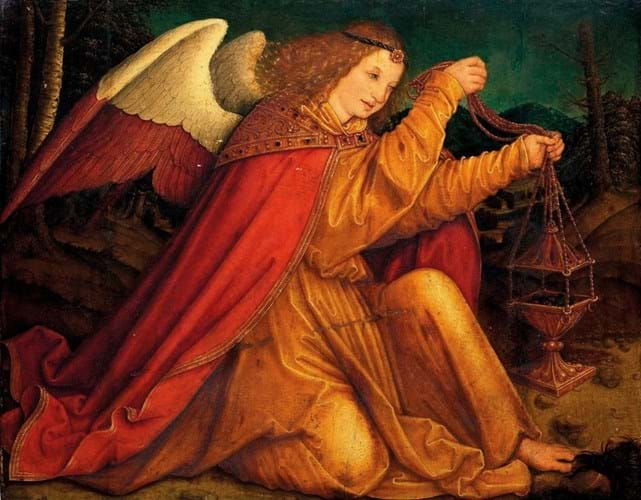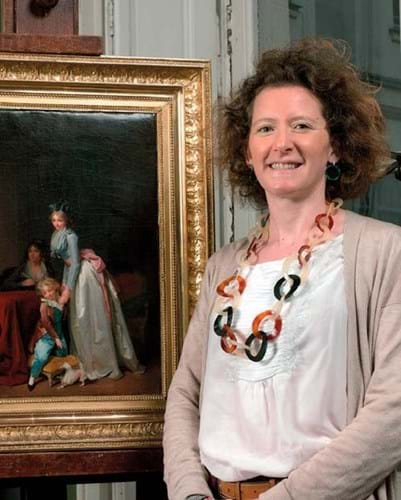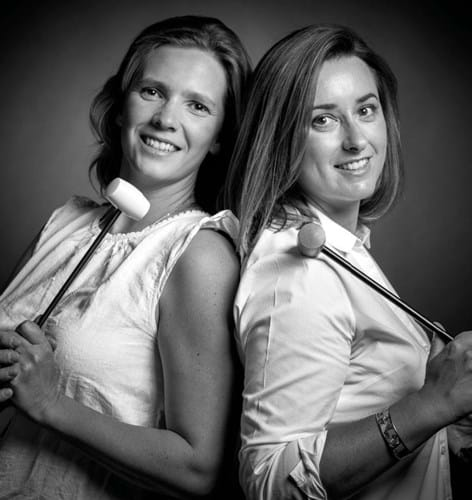
Bernhard Strigel’s 'Ange thuriféraire vêtu d’une tunique jaune' (Angel in a yellow tunic holding a censer), sold for €2.8m (£2.37m) at Artpaugée in Toulouse.
A rediscovered 16th century Old Master painting of a thurifer or censing angel by the German artist Bernhard Strigel sold for €2.8m/£2.37m (€3.47m inc premium) at a Toulouse auction.
Ange thuriféraire vêtu d’une tunique jaune (angel in a yellow tunic holding a thurible or censer), a 19¼in x 2ft (49 x 61cm) oil on an unparqueted, four-plank quarter sawn oak panel, is a late work by Strigel (1460-1528), painted c.1520.
It is the companion to another panel of a censing angel wearing a purple tunic which was sold for a premium-inclusive €1,082,970 by Maître Delvaux at Drouot in Paris in 2008 and is now in the Louvre Abu Dhabi museum.
In both the figures of the kneeling angels cover most of the picture surface with a landscape visible in the background. They are thought to have once formed part of the same large altarpiece.
The Delvaux price had set the auction record for Strigel until the Toulouse result which was over double the previous high and several times the €600,000-800,000 estimate.
It was paid by an unnamed institution after a 15-minute battle between seven international bidders at the Chapelle des Carmelites in Toulouse where the February 4 auction was staged by Artpaugée (24% buyer’s premium inc VAT), a firm co-founded in the city in 2018 by two young auctioneers: Pauline Maringe and Géraldine Martres.
Ange thuriféraire vêtu d’une tunique jaune was discovered by Maringe during the course of an insurance valuation for a local Toulouse family. Sensing this could be a rare work, Maringe contacted Cabinet Turquin, the Paris Old Master specialist.
Turquin’s expert Philippine Motais de Narbonne, who undertook detailed research to authenticate the work, said: “When I saw the photo, I knew I was faced with a prodigious, captivating work, I told myself that we could go there, that we absolutely had to work on it.”
Motais de Narbonne’s research and analysis included infra-red photography of the panel that has revealed the artist’s underdrawing. She had also had the opportunity to study the other Strigel panel of the angel in the purple robe during a three-year stay in Abu Dhabi and was therefore able to compare the two works and note the close similarity in terms of subject, dimensions, type of wood, treatment of the landscape, symmetry and scale of the figures, confirming that they are from the same work.
It is believed that they possibly formed part of the altarpiece created by Strigel for the Frauenkirche (church of Our Lady) in Memmingen, Strigel’s native town, which was dispersed during the Reformation.
Strigel, known as the Master of the Hirscher Collection until his identity was discovered in the late 19th century, was a mature artist at the height of his powers when these works were created and both show his transition from the late Gothic to the Renaissance style.
Point of separation
In terms of provenance, both the Toulouse and Abu Dhabi panels were once owned by François- Louis-Esprit Dubois (1758-1828), a lawyer and police commissioner turned art collector with a large collection of Old Masters.
The panels became separated when they featured in successive sales in Paris from Dubois’ collection: the Abu Dhabi angel in an 1813 sale and the Toulouse angel in 1816. At the time both were thought to be the work of Albrecht Dürer, Strigel’s more famous contemporary. Both artists had worked for the Emperor Maximilian I and encountered each other at the Diet of Augsburg, the assembly of the various rulers of the Holy Roman Empire.

Philippine Motais de Narbonne, the expert from Old Masters specialist Cabinet Turquin who researched the Strigel painting for the auction. “The auctioneers have trusted us. The Turquin firm has done a long job of research, and this work has been rewarded at its fair value, it is very satisfying,” she said after the sale.
The angel in the yellow tunic was acquired at the 1816 auction by Count Charles-Etienne de Bourgevin Vialart de Saint-Morys (1772-1817), a collector of medieval and Renaissance art under the First French Empire who became interested in Gothic art when in exile during the Revolution.
It featured in a posthumous sale of his collection in 1818 where it was purchased by the dealer M Berthon and was then probably included one of two auctions held in 1845 in Paris after Berthon ran into financial difficulties. The painting next appears in a private French collection where it had been since the beginning of the 1900s, passing down by descent to the vendors.
£1 = €1.18















